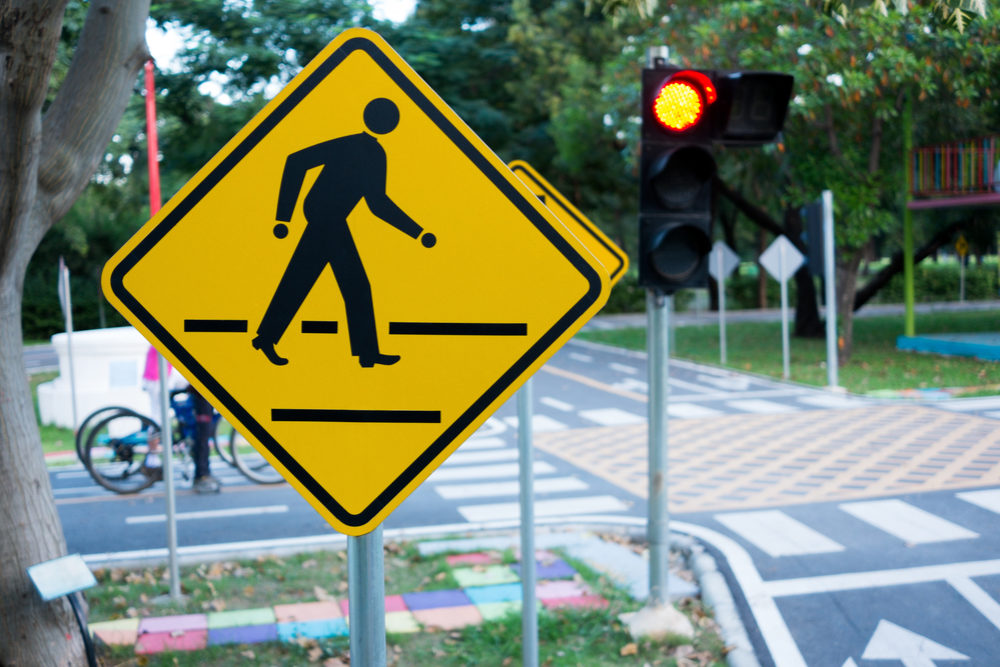Rising Rates of Pedestrian Injuries Require More Protective Measures in Some Communities: CDC
CDC calls for more traffic safety infrastructure in the face of rising emergency room visits linked to pedestrian auto accidents.

A new report by federal health regulators highlights a concerning increase in pedestrian injuries due to auto accidents, stressing the urgent need for better safety measures in many communities throughout the United States.
The U.S. Centers for Disease Control and Prevention (CDC) published a report on emergency department visits for pedestrians injured in auto accidents on May 2, as part of the agency’s Morbidity and Mortality Weekly Report (MMWR).
Despite efforts to reduce pedestrian accidents, both in the United States and globally, the CDC report reveals that pedestrian injuries from traffic accidents are continuing to rise, and many of these incidents could have been prevented. In 2021 alone, about 7,000 pedestrians died in motor vehicle accidents, reaching a peak not seen in 40 years, according to the data.
Pedestrian Traffic Accident Concerns
The problems have worsened in more recent years, as pedestrian traffic deaths surged in the U.S. following the COVID-19 pandemic, with rates increasing by 37% between 2000 and 2020.
Much of the risk in pedestrian deaths has been blamed on the increasing popularity of SUVs, pickup trucks and other large vehicles, which have become more common on U.S. roadways over the last few decades. These types of vehicles typically have high front ends that can cause catastrophic injuries to pedestrians and cyclists, especially among children.

Did You Know?
AT&T Data Breach Impacts Millions of Customers
More than 73 million customers of AT&T may have had their names, addresses, phone numbers, Social Security numbers and other information released on the dark web due to a massive AT&T data breach. Lawsuits are being pursued to obtain financial compensation.
Learn MorePedestrian Traffic Accident Emergency Room Visits
From January 2021 to December 2023, the highest proportion of emergency department visits for pedestrian injuries occurred among six racial and ethnic minority groups. The report indicates that individuals aged 15–34 years and males in general faced the greatest risks, particularly during the months of September to November each year.
Out of approximately 301 million emergency department visits, there were 137,325 cases related to pedestrian injuries, making up an overall proportion of 45.62 pedestrian injury visits per 100,000 total emergency department visits, according to the CDC’s findings.
Compared to visits among non-Hispanic White individuals, visits among other racial and ethnic groups were significantly higher. Specifically, they were 2.47 times higher among non-Hispanic multiracial individuals or those of another race, 2.23 times higher among non-Hispanic Asian individuals, 2.13 times higher among non-Hispanic American Indian or Alaska Native individuals, 1.93 times higher among non-Hispanic Black or African American individuals, 1.70 times higher among Hispanic or Latino individuals, and 1.53 times higher among non-Hispanic Native Hawaiian or Pacific Islander individuals.
The proportion of visits among males was nearly double that seen than among females. Additionally, compared to numbers during summer, visits peaked during autumn. In addition, some states, particularly those with large urban areas like New Jersey and New York, reported more than four times as many pedestrian injuries than more rural states, like Iowa, Kansas, Missouri, and Nebraska.
In comparison to the visit proportion among individuals aged 65 years and older, traffic injury emergency room visits were 2.83 times higher among pedestrians aged 15–24 years, 2.61 times higher among those aged 25–34 years, 2.18 times higher among those aged 35–64 years, and 1.25 times higher among those aged 0–14 years.
Traffic Infrastructure Improvements Needed to Protect Pedestrians
The CDC’s research highlights a number of deficiencies in pedestrian traffic infrastructure, including unsafe walking conditions, poorly maintained sidewalks, insufficient street lighting, as well as a lack of crosswalks, speeding vehicles, intoxicated drivers and pedestrians, and visibility issues.
Obtaining more timely pedestrian injury data could also help improve the situation, by empowering collaborating federal, state, and local partners to rapidly monitor trends, identify disparities, and implement strategies supporting the Safe System approach, CDC researchers note. This framework, designed to protect all road users, encompasses comprehensive safety measures aimed at reducing pedestrian injuries and ensuring the safety of individuals navigating roadways.
“A comprehensive approach involving collaboration among federal, state, and local partners could help prevent pedestrian injuries and address social and structural inequities that contribute to traffic-related injury risk,” the CDC researchers concluded.
Want a weekly update on top lawsuits, recalls & warnings?
"*" indicates required fields




0 Comments